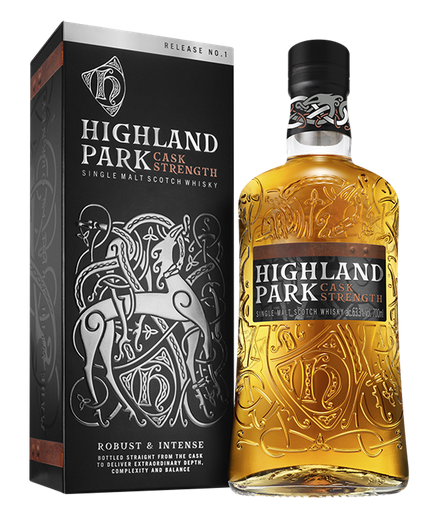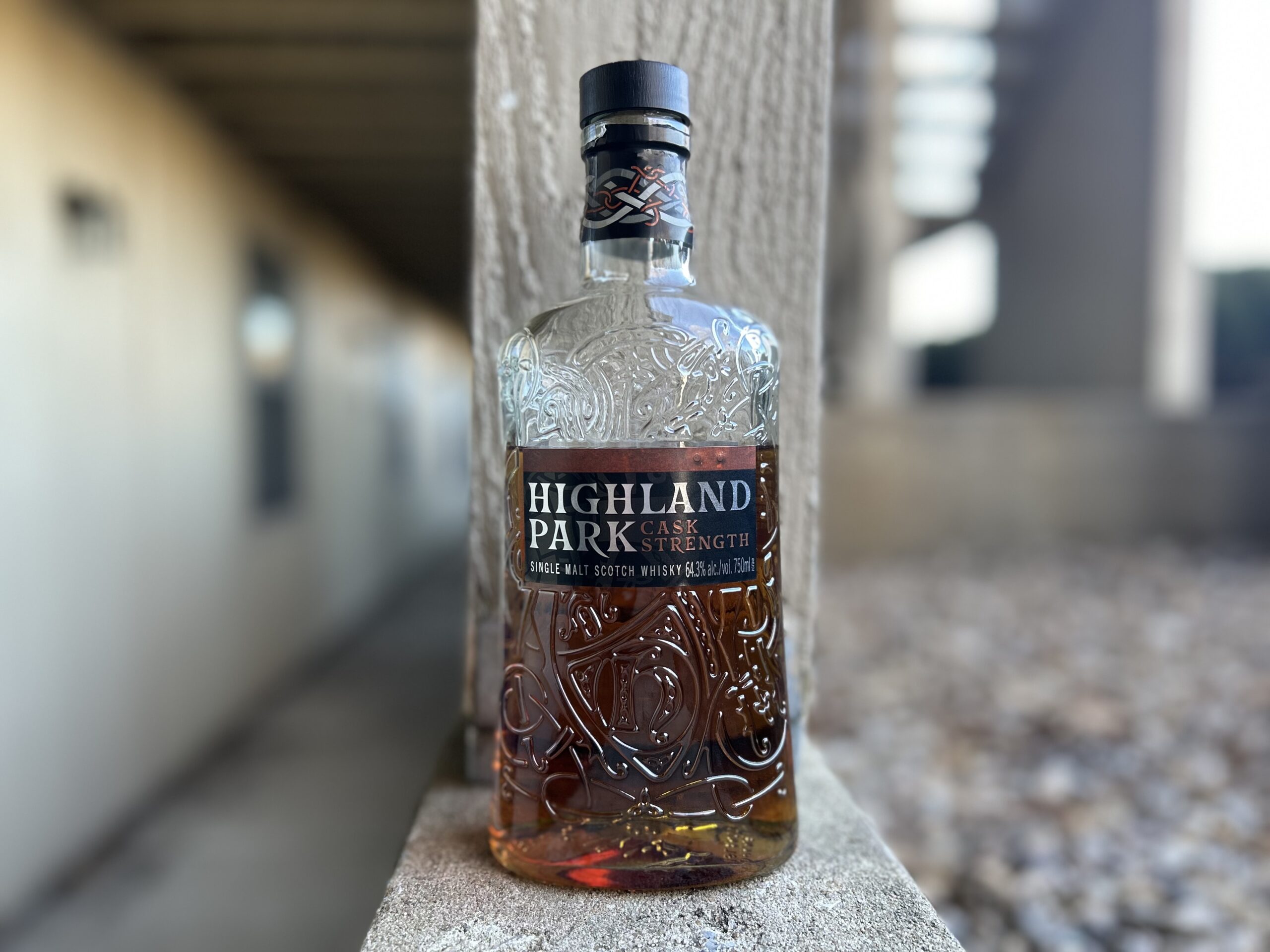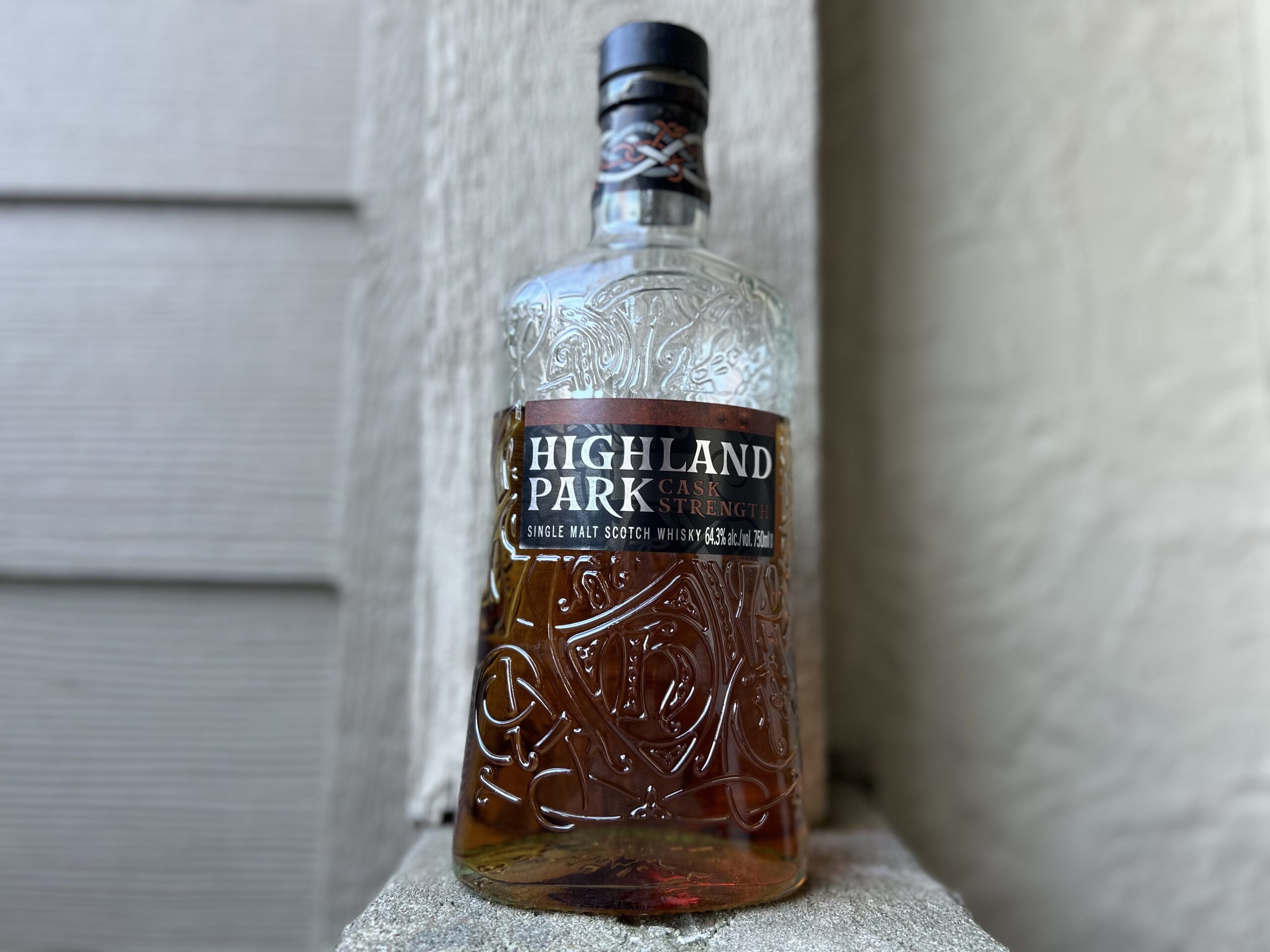Today’s review takes us out of Kentucky and into Scotland – the Orkney Isles specifically. I’ll be enjoying Highland Park’s Cask Strength Release No. 4. This was recommended to me by a friend as a good celebratory Scotch for a recent promotion. After sampling in the initial toast, I found it interesting enough to deserve a focused review.
Highland Park Distillery is one with a rich history, having made whisky for over 220 years. Its recent cask strength series, which are Highland single malts primarily aged in European sherry oak casks, and further aged in American sherry oak casks, has seen high reviews. It has become an anticipated annual release. Bottled at 128.6 proof, this whisky comes in hot, but I don’t mind that in my Scotch.
One quick note before I get into the whiskey – normally, the bottle is not something I take note of in my reviews. Bottles, in my mind, are ultimately just marketing, and cool bottles can oftentimes be cover for mediocre whisky. However, in this case, I have to say that the bottle is quite attractive in its own right. A simple rounded rectangular shape, the bottle is covered in looping, twisting lines that interact to become one complex image. It’s very attractive and eye-catching. Hopefully the whisky inside lives up to the bottle.
I drank this whisky neat out of a Glencairn.

Highland Park Cask Strength Release No. 4
Cost: $100 SRP
Proof: 128.6
Nose: Dark fruit, a nice light peat smokiness, a zesty spiciness, caramel, light citrus, and malt.
Palate: Light oak, a sherry note, maltiness, a light smokiness, a fruity kind of sweetness, and sweet bread.
Finish: Long and rolling. A continuance of the palate. Smoky peat, sherry, and malt.
The nose on this is quite interesting. It’s lighter than one might expect on a cask-strength whisky. I initially sense fruit notes, with apple and perhaps some apricot there. The peat is there, but gently. I’m a sucker for peat smoke, so I wouldn’t mind if this was a little more peat-forward, but I can appreciate how nicely it blends in with the sweeter notes around it. Caramel and a little spice from the American oak are present. I think I sense a citrus note, but it’s not obvious like the other notes. Finally, a note I can only describe as “malty” makes itself known. It’s a note that I find pleasant, but some might not, so it should be noted that it’s pretty front-and-center.
Much of what is found on the nose follows on the palate. The oak is a little more present, but is in no way overwhelming. The sherry influence is there, as well as the taste I associate distinctly with a single malt Scotch. Again, it’s quite easy to find the peat, but it’s light and very well-intertwined with every other taste on the palate. It’s a sweeter kind of smoke, which is quite enjoyable. The sweet notes present are not like bourbon – they’re more subdued, perhaps like a sweet bread.


The finish is impressive. It rolls on and on – longer than any finish I’ve experienced on a whisky in awhile. Fading notes of oak spice, the sweet bread mentioned earlier, and fruit from the sherry all continue on. Quite enjoyable.
One thing I’ll note about this whisky: from nose to finish, it carries its proof incredibly well. There was never a point that I felt it was too hot. It drinks much closer to 100 proof than 128, which is quite an achievement, if you ask me.
To wrap up, I really enjoyed this one. While I typically lean toward Islay with my Scotch, I will enjoy a Speyside or Highland from time to time. This is certainly one that’s worth picking up. There’s enough peat present to satisfy someone like me, while not being the defining feature of the pour in any way.
Is it worth your money? I purchased it at $100. For me, it was well worth it, and I would buy it again at that price. If you’re a peat hound, or a bourbon lover looking for a new experience, I would look elsewhere. The bourbon influence is there, but it might be a difficult pour for someone coming from the sweeter notes of a bourbon. But if you enjoy a Highland Scotch with peat influence, don’t miss this one.
Rating: 4.2/5




